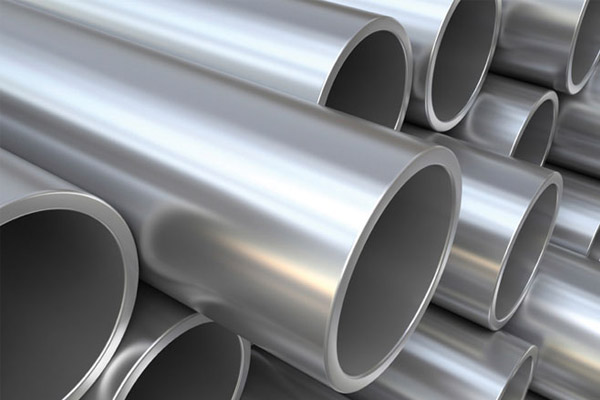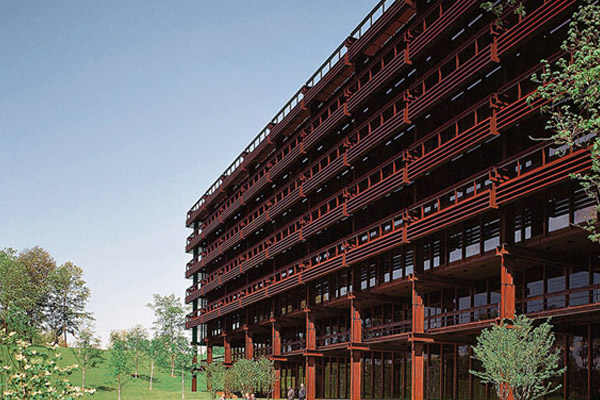How steel has developed from a structural to an aesthetic choice for buildings.
Steel as a structural element
The restoration of buildings plays a fundamental role in the regeneration of urban spaces. Recovering and upgrading the “built space” provides an opportunity for urban communities to provide high-quality housing that meets the needs of both local people and their immediate surroundings.
Restoring buildings is also essential for preserving the architectural heritage of an area. However, insight and creativity are needed to use new planning guidelines in such a way that make old structures compatible with new consolidation-and-repair methods, both stylistically and structurally.
Steel is a material that has always been an essential part of this process and its long-established use, in combination with brick or stone masonry, has taken on a different significance over the years.
The history of restoration is full of examples where steel has been used to improve the structural strength of a building. Old floors are tied into vertical anchor plates that contrast deliberately with the surrounding masonry. Steel hoops with decorative stripes and collars are placed around columns that have started to deteriorate or bulge. It is also common practice to use steel chains at the imposti of deteriorating and decaying masonry arches and domes. They are used for new domes as well.
These are cases where steel is used to increase the tensile strength of masonry, in particular, but they only relate to localized, ad hoc use. However, from the end of 18th century, after the Industrial Revolution, the applications of metal in architectural design, increased as a result of improvements in its tensile strength and hardness. Consequently, steel has taken a primary role in building construction, especially where strength and flexibility is required for spaces with large free spans.
In the field of building restoration, due to a variety of technical requirements, steel has become, over time, the key material for the stability and integrity of new structures, on the one hand, and design solutions for the adaptation and renovation of pre-existing ones, on the other.
It is available in many forms – hot-rolled profiles, tubular products, cold-formed sections, corrugated or flat sheets, rods, wires and strands. There’s steel with very high elasticity, controlled oxidation steel or stainless steel. It can be deployed for many structural solutions that make use of the latest techniques such as the increasing structural strength by the use of stretched bars or the stitching of cemented patterns.

Hot rolled steel tube, ASD metals
However, despite being a material of great versatility for external use, it’s still an element that’s frequently hidden inside masonry structures. For this reason, in the last 50 years, the architectural “intelligentsia” of restoration, have made great efforts to define rules for the use of steel that are both structurally effective and acceptable in terms of what is prescribed in restoration best-practice literature.
And that’s why today, masonry-restoration work on old buildings needs to be immediately identifiable and, to a large extent reversible, in compliance with modern restoration theory.
Steel as an aesthetic choice – Corten steel
Steel is also widely used for aesthetical and stylistic reasons. There are famous examples of great architecture that exemplify, for example, how Corten steel is the chosen material in the completion, extension or partial transformation of old buildings for a change of use.
Corten steel has the enviable quality of growing old with a “certain style”. Technically it is a steel with high- performance characteristics, able to resist corrosion through a protective film – a “patina” created through an oxidisation process that provides warmth and intensity through its natural rust-like colour. With its combination of structural strength and aesthetic charm, corten is a material frequently used by architects and specifiers, who appreciate its remarkable adaptability.
The first to use Corten, in the mid-fifties, was Eero Saarinen for his project, the John Deere company’s headquarters, in Moline, Illinois, United States

John Deere company’s headquarters – Eero Saarinen architects, Moline, Illinois
A very significant example that allows us to understand the expressive power of Corten, in the restoration and completion of old buildings, is the Shoreditch House Members Club, the new boutique London hotel designed by Archer Architects. It is very good demonstration of an immediately-identifiable change to the building that stands out as a new design feature – softened by the “weathered look” and warm colour of the Corten steel that’s been added to it.

Shoreditch House Members Club –Archer Architect. – London, UK